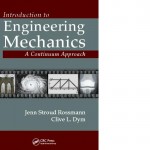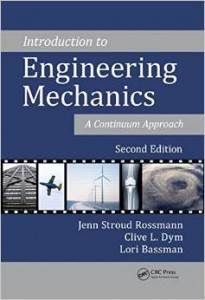 I believe that a continuum approach to the mechanics of materials allows students to make connections between solid and fluid mechanics, and to understand behavior of materials whose behavior is neither purely that of an ideal solid nor fluid — most biomaterials lie in this middle ground. I make frequent use of historical case studies demonstrating that an engineer does not, or should not, work in a vacuum. The textbook I co-wrote with Clive Dym, published by Taylor & Francis/CRC in 2008, reinforces this approach. I’ve also talked about
I believe that a continuum approach to the mechanics of materials allows students to make connections between solid and fluid mechanics, and to understand behavior of materials whose behavior is neither purely that of an ideal solid nor fluid — most biomaterials lie in this middle ground. I make frequent use of historical case studies demonstrating that an engineer does not, or should not, work in a vacuum. The textbook I co-wrote with Clive Dym, published by Taylor & Francis/CRC in 2008, reinforces this approach. I’ve also talked about  this method at ASEE and ASME conferences. It is especially well-suited for bioengineering students, as it transcends typical disciplinary boundaries. The Second Edition of our book, just out in 2015, includes additional case studies and many more homework problems than the first.
this method at ASEE and ASME conferences. It is especially well-suited for bioengineering students, as it transcends typical disciplinary boundaries. The Second Edition of our book, just out in 2015, includes additional case studies and many more homework problems than the first.
By the end of the semester, students who complete this course (ES230) will be able to:
- Define and understand the concepts of stress and strain;
- Apply these concepts to a wide range of engineering problems;
- Interpret and apply the governing equations for the motion and equilibrium of a continuous medium;
- Make both qualitative and quantitative predictions about complex systems, based on the physical intuition developed in class;
- Identify, interpret, and distinguish the assumptions and approximations made in modeling real problems; evaluate appropriateness of assumptions.
